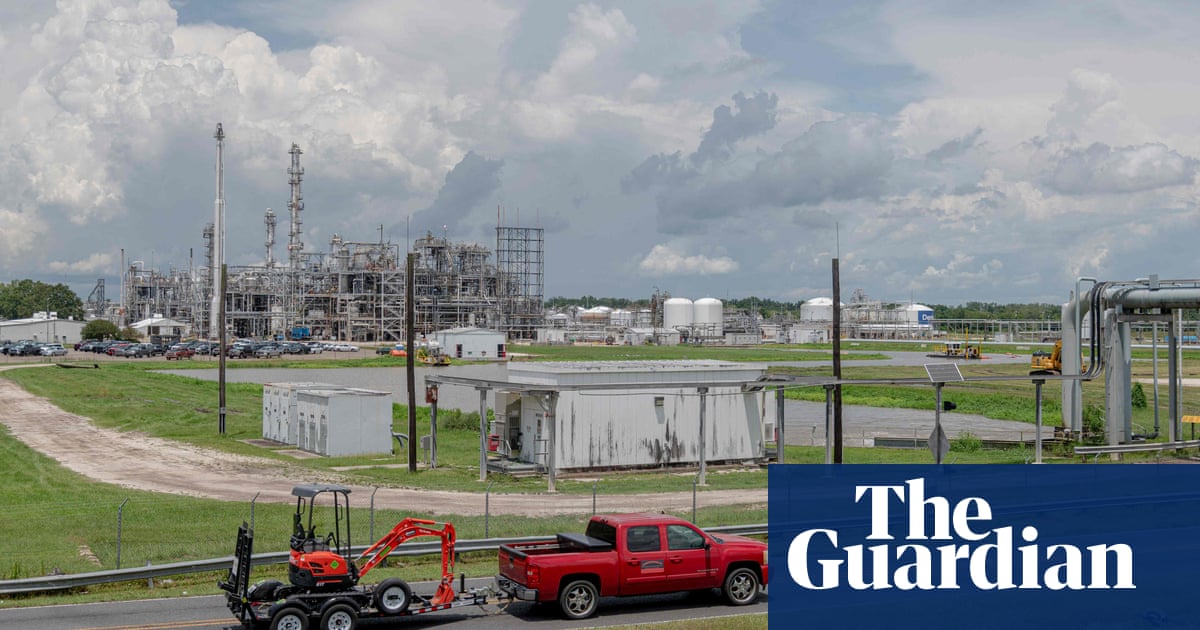Carbon-capture gold rush an ‘insult’ to locals in emissions-hit Louisiana
Carbon-capture gold rush an ‘insult’ to locals in emissions-hit Louisiana The Guardian


Investments in Carbon Capture Projects in Louisiana Raise Concerns

Millions of dollars of investments in new carbon capture projects in Louisiana – with more announced this week, are unwelcome developments to some environmental activists in the state.
“We’ve been trying to fix the oil and gas damage, while at the same time trying to push the transition away from it,” said Monique Hardin, director of law for the Deep South Center for Environmental Justice.
“And now we have carbon-capture and sequestration to contend with,” added Hardin, whose group is a member of Louisiana Against False Solutions, a coalition of environmental and watchdog nonprofits fighting the carbon capture projects.
The Role of Sustainable Development Goals (SDGs)
Carbon capture technology, supported by the US federal government, the fossil fuel industry, and some environmental groups, does not yet exist on a meaningful scale. Some climate experts worry the focus on the technology will distract and undermine efforts to phase out fossil fuels.
- SDG 7: Affordable and Clean Energy
- SDG 9: Industry, Innovation, and Infrastructure
- SDG 13: Climate Action
About 30 carbon-capture projects have been proposed in Louisiana – all of them spurred by federal subsidies and most supercharged by increased incentives in the Inflation Reduction Act intended to address global warming.
A total of 170 projects have been announced nationwide, with only Texas having as many projects as Louisiana. On Friday, the Department of Energy announced $1.2bn investment in carbon capture projects in Louisiana and Texas.
Environmental Concerns and Economic Implications
Environmental justice advocates and other opponents of carbon capture and sequestration say the technology is environmentally and economically risky and encourages the status quo for fossil fuel companies. One oil company CEO said earlier this year that carbon capture will help “preserve our industry over time”.
The IRA increased tax credits, called 45Q, to permanently store carbon from $50 per ton to $85 per ton. Directly capturing the carbon from ambient air earns developers $180 per ton. The law also allows the credit to be paid in cash to developers, which include companies or subsidiaries of Shell, ExxonMobil, and Koch.
The Potential of Carbon Capture Technology
The technology’s backers include Jennifer Granholm, the energy secretary, who talked up its potential in a press conference call about the new investment. “If we deploy this at scale, this technology can help us make serious headway toward our net zero emissions goals while we are still focused on deploying more clean energy at the same time,” she said.
“It’s hard to imagine a future where we actually solve climate change without carbon capture,” says John Thompson, markets and technology director at the Clean Air Task Force, which supports carbon capture and tracks project announcements.
Modeling conducted by the International Energy Agency indicates carbon capture will be necessary to reach net zero by 2050, and backers of the technology say it’s a must for industries including steel, cement, and chemicals, where there’s no good substitute for fossil fuels.
Concerns in Louisiana
However, in Louisiana, one issue for opponents is that carbon capture is being proposed as a component of brand new facilities for ammonia, hydrogen, and biomass, among others, with the products produced at those sites labeled by developers as “green” or “clean”.
“What we aren’t seeing is announcements to retrofit refineries or existing ammonia facilities, or other petrochemical facilities. That automatically means we are only seeing net new emissions,” said Logan Atkinson Burke, executive director of the Alliance for Affordable Energy, an energy consumer advocacy group.
Louisiana, with about 1% of the nation’s population, already emits more than 4% of the United State’s greenhouse gases because of its heavy industrial base. A Louisiana greenhouse gas inventory shows new announced projects
SDGs, Targets, and Indicators
1. Which SDGs are addressed or connected to the issues highlighted in the article?
- SDG 7: Affordable and Clean Energy
- SDG 9: Industry, Innovation, and Infrastructure
- SDG 13: Climate Action
- SDG 14: Life Below Water
- SDG 15: Life on Land
2. What specific targets under those SDGs can be identified based on the article’s content?
- SDG 7.2: Increase substantially the share of renewable energy in the global energy mix.
- SDG 9.4: Upgrade infrastructure and retrofit industries to make them sustainable.
- SDG 13.1: Strengthen resilience and adaptive capacity to climate-related hazards and natural disasters.
- SDG 14.1: Prevent and significantly reduce marine pollution of all kinds.
- SDG 15.1: Ensure the conservation, restoration, and sustainable use of terrestrial and inland freshwater ecosystems.
3. Are there any indicators mentioned or implied in the article that can be used to measure progress towards the identified targets?
- Indicator for SDG 7.2: Share of renewable energy in the total energy consumption.
- Indicator for SDG 9.4: Proportion of industries using sustainable practices and technologies.
- Indicator for SDG 13.1: Number of deaths, missing persons, and directly affected people attributed to climate-related disasters.
- Indicator for SDG 14.1: Concentration of marine debris on beaches.
- Indicator for SDG 15.1: Proportion of important sites for terrestrial and freshwater biodiversity that are covered by protected areas.
Table: SDGs, Targets, and Indicators
| SDGs | Targets | Indicators |
|---|---|---|
| SDG 7: Affordable and Clean Energy | 7.2: Increase substantially the share of renewable energy in the global energy mix. | Share of renewable energy in the total energy consumption. |
| SDG 9: Industry, Innovation, and Infrastructure | 9.4: Upgrade infrastructure and retrofit industries to make them sustainable. | Proportion of industries using sustainable practices and technologies. |
| SDG 13: Climate Action | 13.1: Strengthen resilience and adaptive capacity to climate-related hazards and natural disasters. | Number of deaths, missing persons, and directly affected people attributed to climate-related disasters. |
| SDG 14: Life Below Water | 14.1: Prevent and significantly reduce marine pollution of all kinds. | Concentration of marine debris on beaches. |
| SDG 15: Life on Land | 15.1: Ensure the conservation, restoration, and sustainable use of terrestrial and inland freshwater ecosystems. | Proportion of important sites for terrestrial and freshwater biodiversity that are covered by protected areas. |
Behold! This splendid article springs forth from the wellspring of knowledge, shaped by a wondrous proprietary AI technology that delved into a vast ocean of data, illuminating the path towards the Sustainable Development Goals. Remember that all rights are reserved by SDG Investors LLC, empowering us to champion progress together.
Source: theguardian.com

Join us, as fellow seekers of change, on a transformative journey at https://sdgtalks.ai/welcome, where you can become a member and actively contribute to shaping a brighter future.







